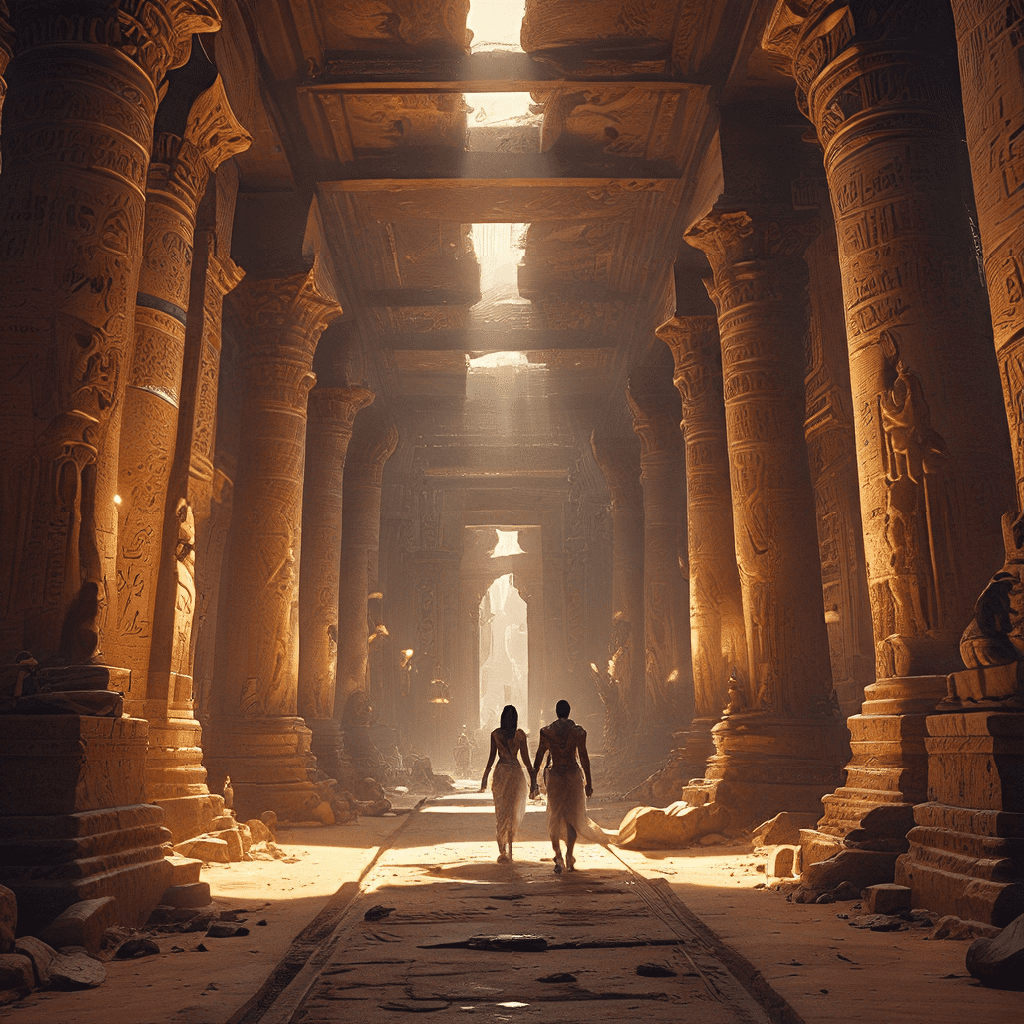The Egyptian Underworld: The Land of the Blessed
Ancient Egyptians believed in an afterlife, a realm beyond the horizon where souls continued their journey. This afterlife wasn’t a singular place, but a complex tapestry of beliefs and concepts. The “Land of the Blessed,” also known as “Aaru” or “Field of Reeds,” represented a paradise for those who lived a virtuous life on Earth. In contrast, the “Duat,” a perilous netherworld ruled by the god Osiris, awaited those who had wronged others.
1. Introduction: A Realm Beyond the Horizon
The Egyptian concept of the afterlife is deeply rooted in their belief in the cyclical nature of life and death. They viewed death not as an end, but as a transition to a new existence. The journey to the afterlife involved a series of trials and transformations, ultimately leading to judgment before Osiris. For those deemed worthy, the Land of the Blessed awaited, a place of eternal peace, joy, and abundance.
2. The Journey to the Afterlife: Trials and Transformations
After death, the soul underwent a complex ritual known as the “Weighing of the Heart.” This ceremony took place in the Hall of Two Truths, where Anubis, the jackal-headed god of mummification, weighed the deceased’s heart against a feather symbolizing truth and justice. The heart, representing the soul’s essence, had to be lighter than the feather to be deemed worthy of entering the Land of the Blessed.
The deceased also had to recite the “Declaration of Innocence,” a statement of their virtue and ethical conduct during their life. The “Book of the Dead,” a collection of spells and prayers, served as a guide through the trials and tribulations of the afterlife. It provided the deceased with the knowledge and protection needed to navigate the underworld and ultimately attain eternal life.
3. The Land of the Blessed: A Realm of Eternal Peace
The Land of the Blessed was a paradise where the righteous enjoyed eternal life and happiness. The “Field of Reeds,” a fertile and abundant landscape, was the heart of this realm, offering a tranquil and joyful existence. The deceased could roam freely, fishing, hunting, and feasting, enjoying the pleasures of a life without pain or suffering.
The “Lake of Fire,” a cleansing fire, symbolised rebirth and renewal. While it may sound intimidating, it served as a purifying process, washing away any lingering negativity or impurities from the deceased’s earthly life. It was a step towards complete spiritual transformation and union with the divine.
Osiris, the god of the underworld and judge of the dead, and his wife, Isis, the goddess of motherhood and magic, presided over this paradise. They were the divine guardians of the Land of the Blessed, ensuring harmony and prosperity for its inhabitants.
4. The Blessed Dwellings: Temples of Joy and Unity
Within the Land of the Blessed, the deceased resided in magnificent dwellings that reflected their virtuous lives. The “Mansion of Millions of Years” represented the promise of eternal life and served as a place of comfort and peace. This expansive dwelling symbolised the boundless time and joy available to the blessed.
The “Hall of Truth,” a place of harmony and unity, offered a space for the deceased to interact with the gods and each other. This hall represented a place of spiritual growth and enlightenment, a place where wisdom and understanding thrived.
The “Field of Offerings,” a bountiful landscape, provided the deceased with eternal nourishment. This field symbolised the abundance and prosperity of the afterlife, reflecting the enjoyment of a life devoid of hardship and scarcity.
5. Daily Life in the Land of the Blessed: A Serene Existence
The Land of the Blessed was a place of endless delight and peaceful coexistence. The blessed spent their days engaged in activities that brought joy and fulfilment. They fished in the peaceful waters, hunted in the bountiful forests, and feasted in the company of their loved ones.
A strong sense of community underscored life in the Land of the Blessed. The deceased interacted with each other, sharing their stories and experiences, fostering a vibrant and lively society. They embraced the harmony and unity that defined this paradise, enjoying the absence of conflict and suffering.
Life in the Land of the Blessed was free from pain, sorrow, and hardship. The deceased experienced a complete sense of well-being, their bodies and souls rejuvenated and their spirits invigorated. They reveled in the serenity and joy of a life lived in accordance with Maat, the cosmic order of truth and justice.
6. The Role of the Sun God Ra: Bringing Light and Life
Ra, the sun god, played a crucial role in the Egyptian afterlife. Each day, he journeyed through the underworld, his presence bringing light and life to the Land of the Blessed. His journey symbolised the cycle of life, death, and rebirth, reminding the deceased of the ongoing cycle of existence.
Ra’s presence brought warmth and comfort to the Land of the Blessed. He acted as a protector and guide, watching over the blessed and ensuring their well-being. His daily journey through the underworld brought renewal and hope, reaffirming the promise of eternal life.
7. The Significance of the Land of the Blessed: Hope and Reassurance
The belief in the Land of the Blessed offered the ancient Egyptians a source of hope and reassurance. It gave them comfort knowing that death was not the end but a transition to a new and beautiful existence. They believed that by living a virtuous life, they could earn their place in this paradise, where they would enjoy eternal peace, joy, and abundance.
The Land of the Blessed represents the ultimate reward for a life lived in accordance with Maat. It is a place of harmony, unity, and everlasting happiness, offering hope and comfort to those who believe in the power of virtue and the promise of a fulfilling afterlife.




